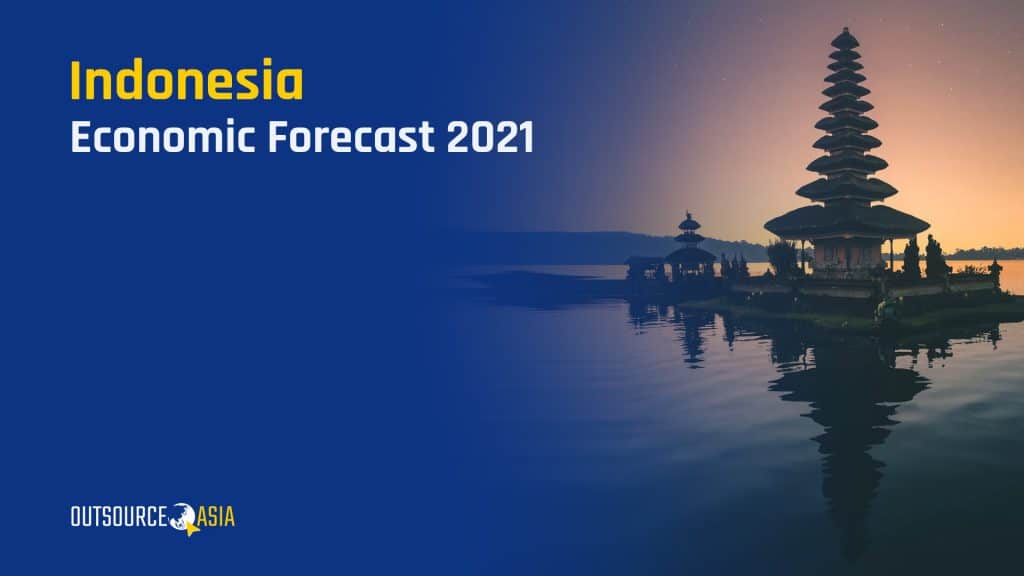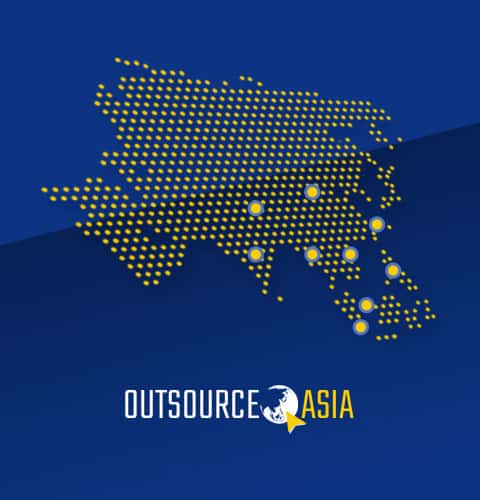
Indonesia Economic Forecast 2021
The Indonesia Economic Forecast 2021 summarizes key economic and social developments over the past year. It also presents findings on the evolution of policy reforms, external/global conditions, and financial-market dynamics from world-recognized financial institutions and multinational professional services authorities, assessing their implications for the country’s medium-term economic outlook.
Indonesia, like all other countries around the world, has taken a hit due to the crisis triggered by the coronavirus disease. The GDP (gross domestic product) of the largest economy in Southeast Asia plunged -2.07% last year – a marked downturn from 2019 when there was 5.02% recorded growth. By comparison, however, Indonesia’s economic recession was milder than among Emerging Markets and Developing Economies (EMDEs) excluding China.
Asian Development Bank (ADB) reported that with improving market conditions and a gradual reopening of the economy, Indonesia’s growth rate is expected to reach 5.0% in 2022. “Despite the unprecedented nature of the crisis triggered by the coronavirus disease (COVID-19), Indonesia has done well in 2020, thanks to the well‑coordinated, well-communicated crisis response and strong leadership to contain the pandemic,” said ADB Country Director for Indonesia Winfried Wicklein.
According to the ADB report, inflation is expected to rise to 2.8% in 2022 but still within the target range of the Bank of Indonesia (BI). “With a sustained trade recovery, a revival in manufacturing, and the large national economic recovery budget for 2021, we are optimistic Indonesia will return to its growth trajectory next year,” explained Wicklein.
When it comes to the average recovery gap among regional and G20 peers which is between -13.6% and -5.1%, Indonesia’s recovery gap is at -7.1% by Q4 2020 and has further accelerated by Q1 2021. Weak labor market has negative impact on consumption and investment growth; however, stronger external demand in manufacturing leads to a more elevated recovery gap in accommodation, transport, retail sales, and similar contact intensive services sectors.
Despite a strong crisis response, the government is struggling to stimulate economic recovery and manage external financing pressures simultaneously. The fiscal deficit skyrocketed to 6.2% in 2020 in comparison to the previous year’s 2.2% and has continued to increase due to declining revenues. Public debt, on the other hand, also rose from 30.2% in 2019 to 39.4% to 2020. To help finance the fiscal deficit (equivalent to 3.7% of GDP and 84% in the primary market) and to stabilize the economy, Bank of Indonesia carried out a large-scale local currency government bond purchase program in 2020 and decreased the benchmark interest rate five times from 5% to 3.5% until February 2021.
Private credit growth, however, has contracted sharply despite healthy bank balance sheets, higher lending to government, and moderate corporate vulnerability. This is particularly pronounced for foreign-owned banks due to low take-up of guarantees and other risk sharing mechanisms, declining reliance on MSMEs banking credit, and weak effectiveness of monetary transmission.
Renewed Restrictions Hamper GDP Growth
Indonesia pulled out of recession in Q2 2021 as consumption and investment rebounded which brings GDP growth to 7.07% – the fastest pace since 2008. “The number is obviously flattered by base effect from last year’s deep slump, but nonetheless signals a fairly strong recovery momentum in April and May especially, before the pandemic resurgence hit Indonesia significantly,” said Wellian Wiranto, an economist at Oversea-Chinese Banking Corp. in Singapore.
Despite the better-than-expected outcome, the virus’ resurgence and mobility restrictions imposed since July will lead to a short-lived GDP bounce. The central bank forecasted a 3.5% growth rate, slightly lower than the previously projected 3.7%.
“The pace of recovery will be capped until Covid-19 risks fade,” according to Krystal Tan and Sanjay Mathur, economists at Australia & New Zealand Banking Group. “Restrictions will need to remain a key containment tool for a prolonged period and any reopening will take place gradually.”
Boosting Economic Recovery Through A Five-Pronged Reform Strategy
- Maintain adequate job relief measures
To mitigate job losses and improve worker retention, two types of job relief measures should be made available:
- fiscal, credit, and cash assistance as direct support to formal and informal companies and employees
- family conditional cash transfer program, nonconditional village cash transfer, and other social assistance programs to protect vulnerable workers in the informal sector
- Create competition and innovation
This will help accelerate economic productivity across the board and unlock new firm entry and growth. Authorities must address non-tariff barriers on intermediate inputs alongside key trade and investment reform agenda that are not specified in the Omnibus Law on Job Creation.
“To increase Indonesia’s economic competitiveness, the government laid out an ambitious reform program for economic transformation away from commodities and towards higher value-added sectors. This could provide a much-needed boost to the post-pandemic economic recovery,” according to Satu Kahkonen, World Bank Country Director for Indonesia and Timor-Leste.
- Support employee transition to jobs-friendly sectors
Indonesia’s Investment Coordinating Board should implement a framework for middle-class job creation and under the Jobs Loss Guarantee Program not only to increase higher-skill middle-class work opportunities but also to redirect structural transformation toward more productive jobs.
- Increase access to foreign talent, lower the high cost of trade, and attract export oriented FDI (foreign direct investments) with links to global value chains
- Develop and maintain a strong job-matching mechanism which does not discourage job changes and provides unemployment insurance during job shifts
- Monitor increased demand for skilled workers in automation sector and potential displacement of manual laborers
- Build a middle-class workforce
Upskilling and re-skilling the current Indonesian workforce will prepare employees for middle-class jobs. This means providing access to online distance learning in short technical courses and vocational education.
According to Coordinating Minister for Economic Affairs, Airlangga Hartarto, “Creating better-quality jobs with higher productivity and better pay is among the top priorities of the government’s policy agenda as it is a way for the nation to step up the ladder of prosperity. It has now become even more important to assist the country and its people to not only recover from the economic fallout due to the pandemic but also build forward better.”
- Focus on women’s labor participation
Working-age women in Indonesia only comprise 54% of the labor force compared to 82% of working-age men. With more than 65% of the female population in the 15 to 64 age group, removing barriers to their economic participation and making the workplace friendlier to women would not just support greater short-term growth but would also ensure the country’s economic recovery. This would also maximize investments in human capital and help close gender gaps.
About Outsource Asia
Outsource Asia is committed to providing industry and technology expertise, solutions, frameworks and tools to businesses looking to explore, build, and manage outsourced teams. Its seasoned outsourcing professionals connects organizations of all sizes and types to top-notch outsourced suppliers and service providers in the Philippines and around the world.
What services do you want to outsource? Schedule for FREE CONSULTATION today


